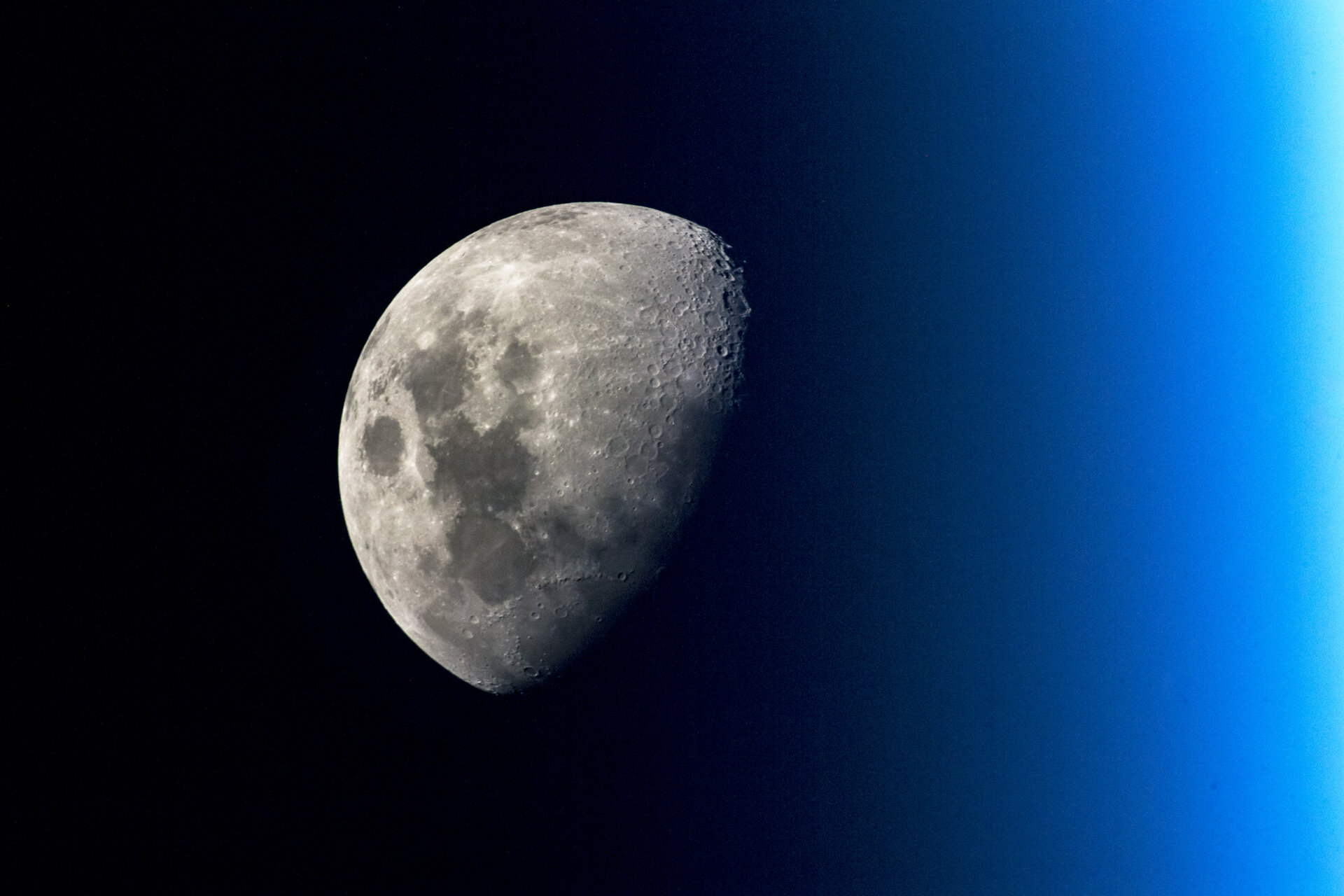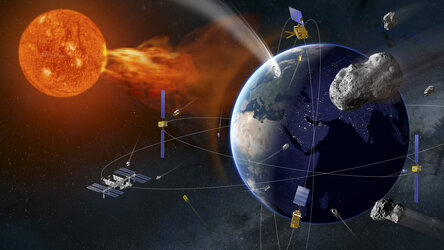Accept all cookies Accept only essential cookies See our Cookie Notice

About ESA
The European Space Agency (ESA) is Europe’s gateway to space. Its mission is to shape the development of Europe’s space capability and ensure that investment in space continues to deliver benefits to the citizens of Europe and the world.
Highlights
ESA - United space in Europe
This is ESA ESA facts Member States & Cooperating States Funding Director General Top management For Member State Delegations European vision European Space Policy ESA & EU Space Councils Responsibility & Sustainability Annual Report Calendar of meetings Corporate newsEstablishments & sites
ESA Headquarters ESA ESTEC ESA ESOC ESA ESRIN ESA EAC ESA ESAC Europe's Spaceport ESA ESEC ESA ECSAT Brussels Office Washington OfficeWorking with ESA
Business with ESA ESA Commercialisation Gateway Law at ESA Careers Cyber resilience at ESA IT at ESA Newsroom Partnerships Merchandising Licence Education Open Space Innovation Platform Integrity and Reporting Administrative Tribunal Health and SafetyMore about ESA
History ESA Historical Archives Exhibitions Publications Art & Culture ESA Merchandise Kids Diversity ESA Brand Centre ESA ChampionsLatest
Space in Member States
Find out more about space activities in our 23 Member States, and understand how ESA works together with their national agencies, institutions and organisations.
Science & Exploration
Exploring our Solar System and unlocking the secrets of the Universe
Go to topicAstronauts
Missions
Juice Euclid Webb Solar Orbiter BepiColombo Gaia ExoMars Cheops Exoplanet missions More missionsActivities
International Space Station Orion service module Gateway Concordia Caves & Pangaea BenefitsLatest
Space Safety
Protecting life and infrastructure on Earth and in orbit
Go to topicAsteroids
Asteroids and Planetary Defence Asteroid danger explained Flyeye telescope: asteroid detection Hera mission: asteroid deflection Near-Earth Object Coordination CentreSpace junk
About space debris Space debris by the numbers Space Environment Report In space refuelling, refurbishing and removingSafety from space
Clean Space ecodesign Zero Debris Technologies Space for Earth Supporting Sustainable DevelopmentLatest
Applications
Using space to benefit citizens and meet future challenges on Earth
Go to topicObserving the Earth
Observing the Earth Future EO Copernicus Meteorology Space for our climate Satellite missionsCommercialisation
ESA Commercialisation Gateway Open Space Innovation Platform Business Incubation ESA Space SolutionsLatest
Enabling & Support
Making space accessible and developing the technologies for the future
Go to topicBuilding missions
Space Engineering and Technology Test centre Laboratories Concurrent Design Facility Preparing for the future Shaping the Future Discovery and Preparation Advanced Concepts TeamSpace transportation
Space Transportation Ariane Vega Space Rider Future space transportation Boost! Europe's Spaceport Launches from Europe's Spaceport from 2012Latest

Lunar agenda
Thank you for liking
You have already liked this page, you can only like it once!
This image of the Moon was taken by ESA astronaut Alexander Gerst from the International Space Station during his Horizons mission. But he’s not the only one to be eyeing the Moon these days.
From 3 to 5 July, ESA is hosting a workshop on lunar exploration at its technical heart in the Netherlands. Building on ESA’s commitment to sustainable exploration, the workshop brings space experts and industry together to talk lunar resources and how to use them to return humanity to the Moon and farther afield.
For humans to live and work on the Moon and beyond, we need oxygen and water for life support as well as fuel and materials to build habitats and equipment. Launching these bulky consumables would cost the kind of money and energy that makes human exploration of the Solar System unsustainable.
Instead, ESA is looking into the capabilities that would allow humans to harness lunar resources for humanity’s sustainable return to the Moon. The approach is known as In-Situ Resource Utilisation. Put simply, it means extracting and processing resources on site to make useful products and services.
Last year, service providers with like-minded ideas were invited to take place in a one-year study exploring what a collaborative and commercially viable mission to the Moon would look like.
During this week’s workshop ESA is continuing this discussion with experts, industry officials, and potential new partners by exploring the technological readiness, commercial viability, legal status, and international context for lunar resource use.
In the meantime, the humans closest to our rocky satellite – astronauts on the International Space Station – are testing technologies such as remotely operating robots to take us a step closer to our next outpost in space.
Learn more about ESA’s vision for the next decade of space exploration here and dive into Alexander's Moon gazing during Horizon's mission in this blog post.
-
CREDIT
ESA/NASA -
LICENCE
ESA Standard Licence

Lunar Pathfinder

Sensing the Moon

The heart of a lunar volatiles detector

Ten things you didn’t know about the Moon – Resource…















 Germany
Germany
 Austria
Austria
 Belgium
Belgium
 Denmark
Denmark
 Spain
Spain
 Estonia
Estonia
 Finland
Finland
 France
France
 Greece
Greece
 Hungary
Hungary
 Ireland
Ireland
 Italy
Italy
 Luxembourg
Luxembourg
 Norway
Norway
 The Netherlands
The Netherlands
 Poland
Poland
 Portugal
Portugal
 Czechia
Czechia
 Romania
Romania
 United Kingdom
United Kingdom
 Slovenia
Slovenia
 Sweden
Sweden
 Switzerland
Switzerland
























